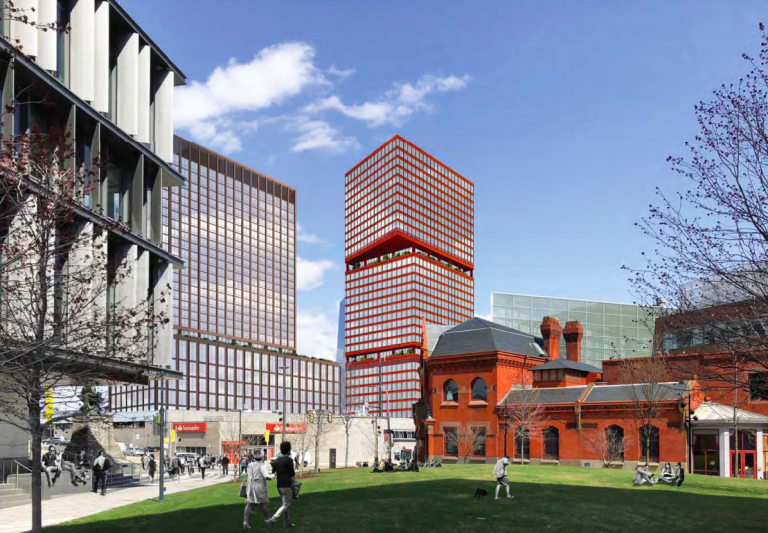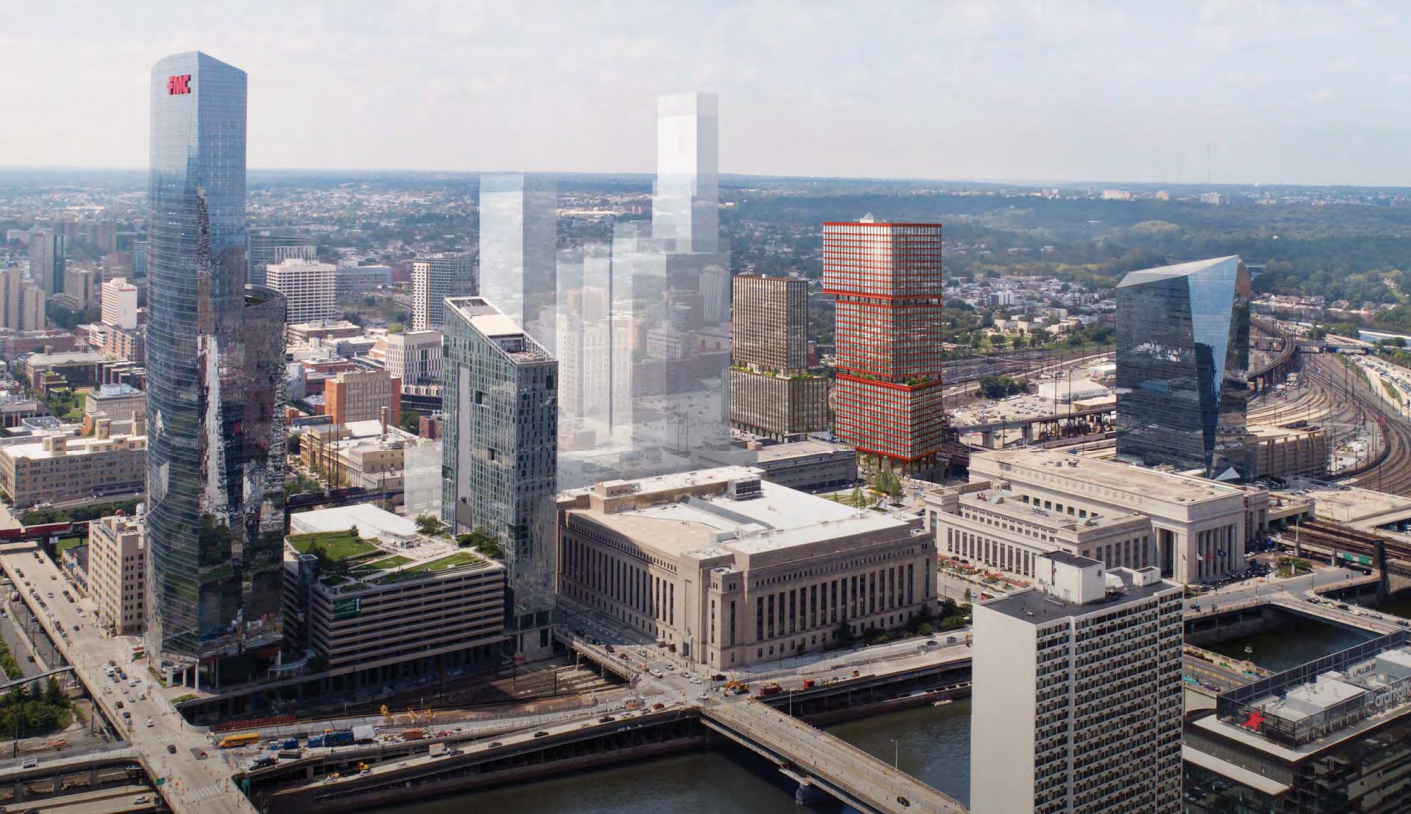Philly’s design world adores the city’s first fire-engine red skyscraper
Brilliant red terracotta laces architect Vishaan Chakrabarti’s first Philadelphia skyscraper. He chose the material for a reason: It’s the next best thing to brick.

An artist's rendering of PAU's proposed tower, as seen from Drexel's College Walk. (PAU/Brandywine)
Brilliant red terracotta laces architect Vishaan Chakrabarti’s first Philadelphia skyscraper. He chose the fire-engine red material for a reason: It’s the next best thing to brick.
“You can’t really build a brick skyscraper for a whole bunch of reasons, but you can try to emulate some of the colors and hues your beautiful city has,” said Chakrabarti, founder of the architecture firm PAU and Brandywine Realty Trust’s designer of choice for the first two new towers of the company’s Schuylkill Yards development.
The red tower and its more demure residential twin received rapturous feedback at Philadelphia’s Civic Design Review committee on Tuesday. At least one person echoed recent praise from Inquirer architecture critic Inga Saffron, not typically a fan of Philly’s corporate architecture.
“The addition of this red building into the skyline — it’s a risk, but I think this is a very daring and attractive project,” said Leo Addimando, managing partner with the Alterra Property Group and a member of the CDR committee.
The buildings serve as the architectural foundation of the $4 billion development set to transform the barren blocks surrounding 30th Street Station and Drexel University, Brandywine’s partner on the project.
The massive neighborhood-making project has stirred excitement, and trepidation, in West Philadelphia. But on Tuesday, the focus stayed on Chakrabarti’s visually striking additions to the city’s burgeoning skyline.
With its bold hue, patterning and its distinctive lilting design, the tower brings a fresh energy to an area where faceless glass towers now gaze blankly over parking lots, high-speed roadways and rail yards.
Chakrabarti described Philadelphia’s historic red-brick character as the touchstone for the project’s coloring.

“We think of its city as a city of weaves,” said Chakrabarti, whose firm’s name stands for “the Practice for Architecture and Urbanism.”
“You’ll see a brick facade, but it’s not just red brick but also black brick, metal combined with limestone, stone terracotta with brick. Its that weaving we are trying to emulate.”
Chakrabarti name-dropped Frank Furness as a specific inspiration for the coloring of the tower and studded his Civic Design Review presentation with reference to the master Philadelphia architect’s work.
The two towers before CDR on Tuesday will rise on a massive surface parking spot on John F. Kennedy Boulevard to the west of the station. The red-hued east tower will be 34 stories tall, with 930,000 square feet of office space and 6,600 square feet of retail.
The more staid west tower will stand 361 feet tall, with 326 residential units, 9,600 square feet of retail, and additional office space.
A space called the High Line Plaza, named after the imposing CMX railroad trestle that cuts the space in two will span the area between the two buildings. Brandywine’s team said Tuesday that they want to keep this open space humming with activity at all times. Their vision contrasts starkly with the eerily empty, almost-lunar landscape that currently defines the area.
“In that interest of movement, opening the lobby entrances of both offices to the back of the space will guarantee that kind of energy and movement almost 24/7, if people are working as late as I do,” said Thomas Balsley, principal of SWA/Balsley, a New York City-based landscape design firm. “We believe that circulation, in combination with the retail, will make for a very vibrant public space.”
The architects, designers, landscapers, and developers on the city design review committee were uniform in their praise of the project.
Ashley DiCaro, a CDR member with Interface Studios, asked whether the barren stretch of John F. Kennedy Boulevard to the west of 30th Street would still be used as a pickup and drop off zone for bus companies like Bolt and MegaBus.
The answer is no. The bus services will move away from the rejuvenated area.
“That’s a shame I was thinking it’d be a much better environment to wait for the bus in,” said DiCaro.
Among the light critiques proffered by the city’s Planning Commission were that JFK could be narrowed, and the sidewalks expanded, if the imposing multi-lane roadway will no longer be frequented by idling passenger buses.
For the most part, however, the observers applauded a skyscraper project that will stand out from its neighbors without just towering above them.
“This is a step forward for highrise design … it will stick out and create a new bit of skyline in West Philadelphia,” Addimando said.
WHYY is your source for fact-based, in-depth journalism and information. As a nonprofit organization, we rely on financial support from readers like you. Please give today.







